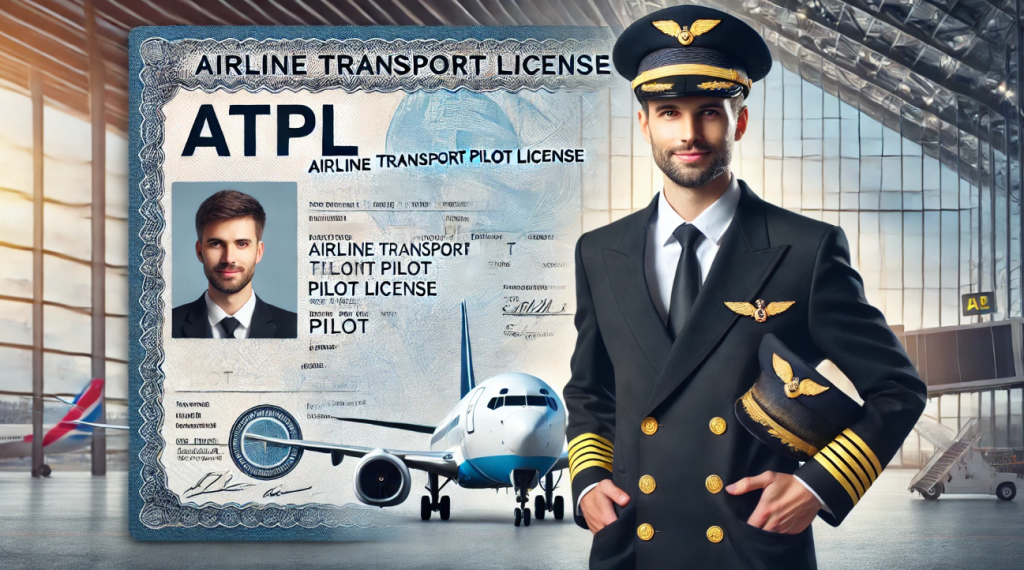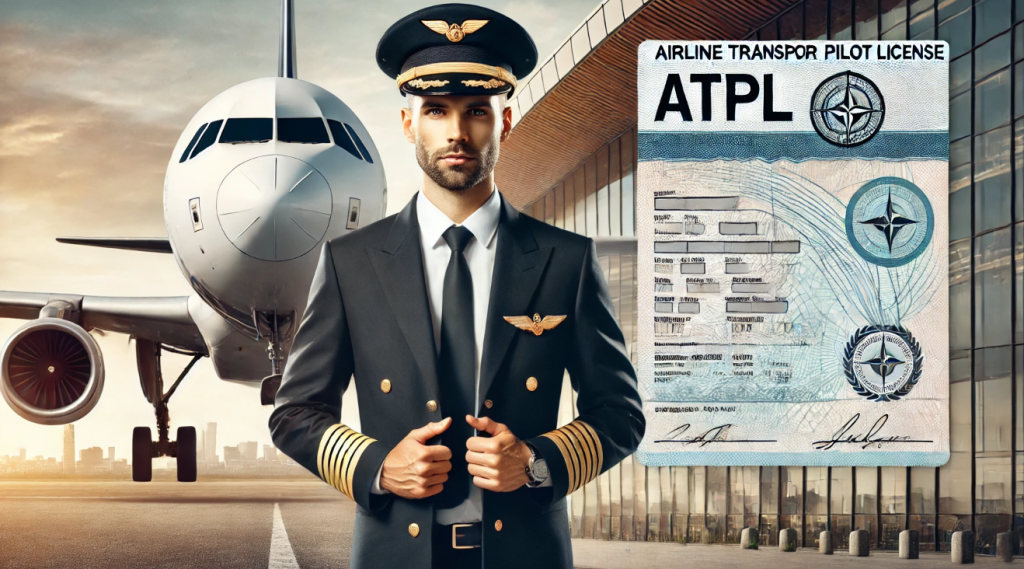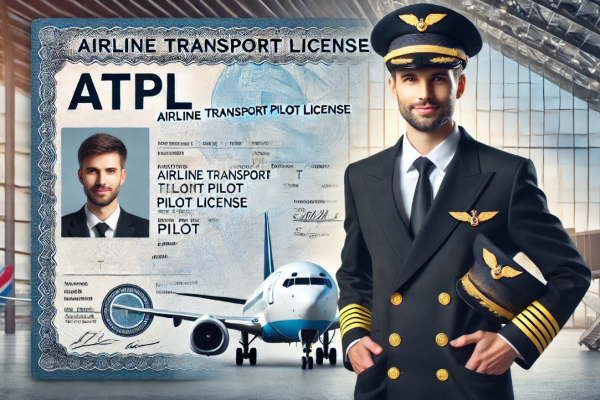
An ATPL, which stands for Airline Transport Pilot License, is the highest level of pilot certification issued by aviation authorities in many countries. It qualifies you to act as the pilot in command (PIC) of large airplanes carrying passengers or cargo on scheduled commercial flights.
Here’s a breakdown of what an ATPL license allows you to do:
- Fly Large Aircraft: ATPL holders are authorized to pilot larger and more complex airplanes compared to a Commercial Pilot License (CPL). This typically refers to airplanes with a maximum takeoff weight exceeding a certain limit (e.g., 5700 kg or more).
- Scheduled Commercial Operations: An ATPL is mandatory for piloting airplanes used for scheduled commercial passenger or cargo transport. This opens doors to flying for major airlines on domestic and international routes.
- Increased Responsibility: As a pilot in command with an ATPL, you hold the ultimate responsibility for the safety of the aircraft, passengers, and crew.
Requirements to Obtain an ATPL:
- Flight Experience: Obtaining an ATPL requires significantly more flight hours than a CPL, often exceeding 1500 hours. This may include specific amounts of experience as pilot in command (PIC) and instrument flying time.
- Advanced Training: In addition to CPL training, ATPL candidates undergo rigorous training in areas like air transport operations, human factors, and multi-crew coordination.
- Stricter Medical Standards: ATPL holders must meet stricter medical fitness standards compared to a CPL to ensure they are physically and mentally capable of handling the demands of airline operations.
- Exams and Tests: Passing a series of written knowledge exams and practical flight tests conducted by a certified aviation authority is mandatory.
ATPL vs. CPL:
While a CPL allows you to fly commercially for hire, it typically restricts you to smaller aircraft and non-scheduled operations. An ATPL signifies a higher level of experience, qualification, and responsibility, making you eligible to pilot large airplanes for major airlines.
Career Opportunities with an ATPL:
- Airline Pilot: Fly for major airlines on domestic and international routes, transporting passengers and cargo.
- Cargo Pilot: Pilot large cargo airplanes for freight companies, transporting goods across vast distances.
- Corporate Pilot (For Large Jets): Fly private jets for corporations and high-net-worth individuals.
- Flight Instructor (For ATPL Training): Train the next generation of airline pilots.
Obtaining an ATPL is a challenging but rewarding endeavor. It opens doors to a prestigious career path in commercial aviation, allowing you to pilot the largest and most complex aircraft in the skies.

An Airline Transport Pilot License (ATPL) is the highest level of aircraft pilot certification. It is required for pilots who wish to act as the pilot-in-command (captain) of a large, multi-crew aircraft operated by an airline. The ATPL is recognized worldwide and is considered the pinnacle of pilot certifications.
Key Features and Privileges of an ATPL
- Pilot-in-Command Authority:
- Allows the holder to act as the pilot-in-command (captain) of large, commercial aircraft.
- The holder can also act as a co-pilot (first officer) in commercial airline operations.
- Broad Recognition:
- The ATPL is internationally recognized and is required by most major airlines for captains.
- Advanced Knowledge and Skills:
- Requires extensive knowledge of aviation, including advanced navigation, meteorology, flight planning, and aircraft systems.
Requirements to Obtain an ATPL
- Age:
- You must be at least 23 years old to obtain an ATPL.
- Medical Certification:
- Obtain a first-class medical certificate from an Aviation Medical Examiner (AME).
- Flight Experience:
- Accumulate a specified number of flight hours. For example, the FAA in the United States requires:
- At least 1,500 total flight hours.
- 250 hours as pilot-in-command.
- 500 hours of cross-country flight time.
- 100 hours of night flight time.
- 75 hours of instrument flight time.
- Accumulate a specified number of flight hours. For example, the FAA in the United States requires:
- Ground School:
- Complete advanced ground school training covering topics such as advanced aerodynamics, flight planning, navigation, meteorology, air law, and aircraft systems.
- Written Exams:
- Pass the written knowledge exams for the ATPL. These exams cover a wide range of advanced aviation topics.
- Flight Test (Checkride):
- Successfully complete a practical flight test (checkride) with an examiner, demonstrating proficiency in advanced maneuvers, navigation, emergency procedures, and multi-crew cooperation.
Steps to Obtain an ATPL
- Begin with a Private Pilot License (PPL) and Commercial Pilot License (CPL):
- Obtain a PPL and then a CPL, which are prerequisites for an ATPL.
- Accumulate Flight Hours:
- Gain the necessary flight experience and log the required hours, often while working as a commercial pilot or flight instructor.
- Complete Ground School:
- Enroll in and complete an advanced ground school program for the ATPL.
- Pass the Written Exams:
- Study for and pass the ATPL written knowledge exams.
- Advanced Flight Training:
- Undertake advanced flight training, often in a multi-crew environment, with a certified flight instructor.
- Pass the Checkride:
- Schedule and pass the practical flight test with a designated pilot examiner.
Career Opportunities with an ATPL
- Airline Captain:
- Serve as the pilot-in-command (captain) of commercial airline flights.
- First Officer:
- Act as a co-pilot on commercial airline flights, with the potential to be promoted to captain.
- Corporate Pilot:
- Fly private jets for corporate clients.
- Cargo Pilot:
- Operate cargo flights for logistics companies.
- Flight Instructor:
- Teach advanced piloting skills and provide training for aspiring airline transport pilots.
